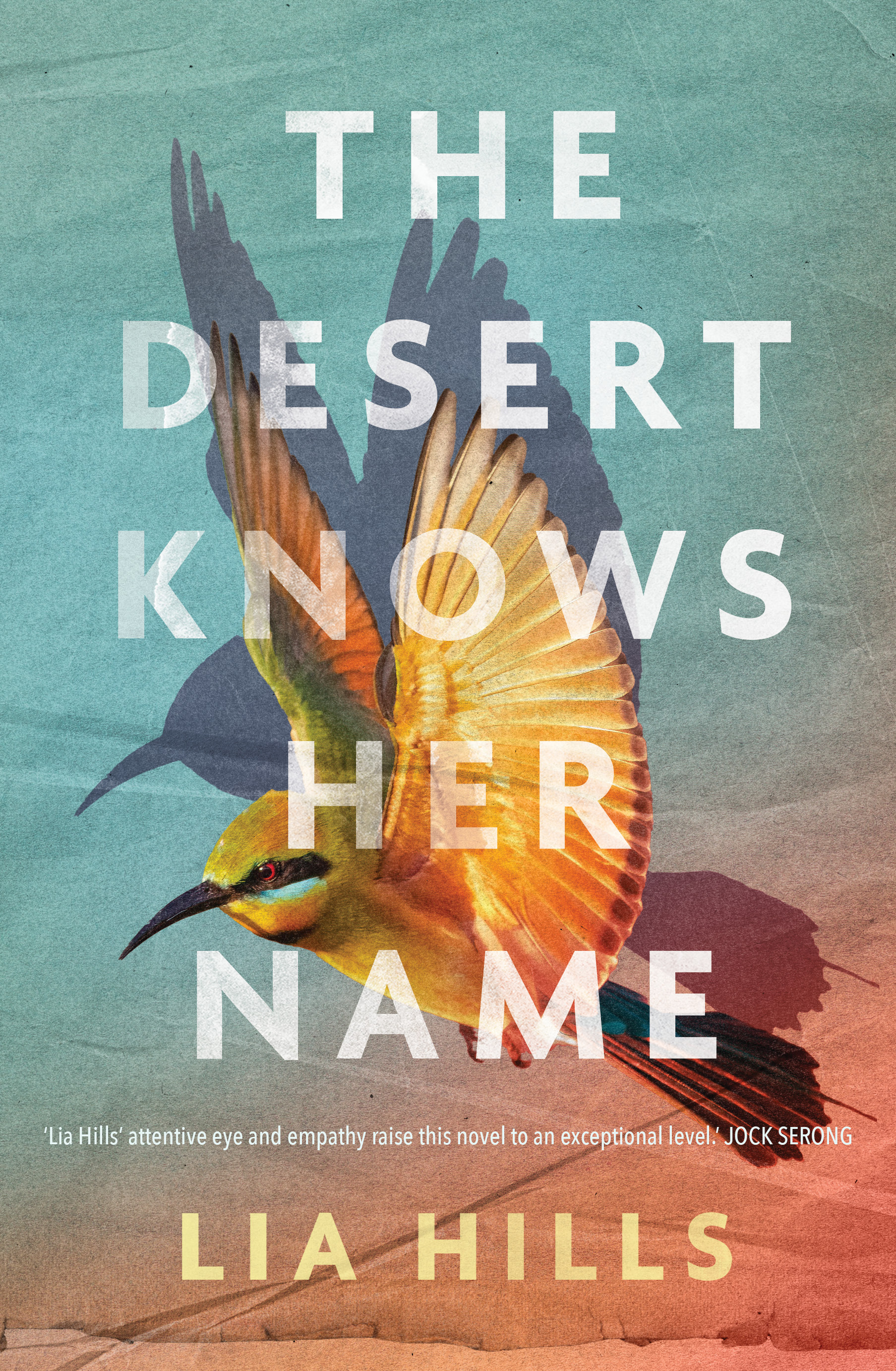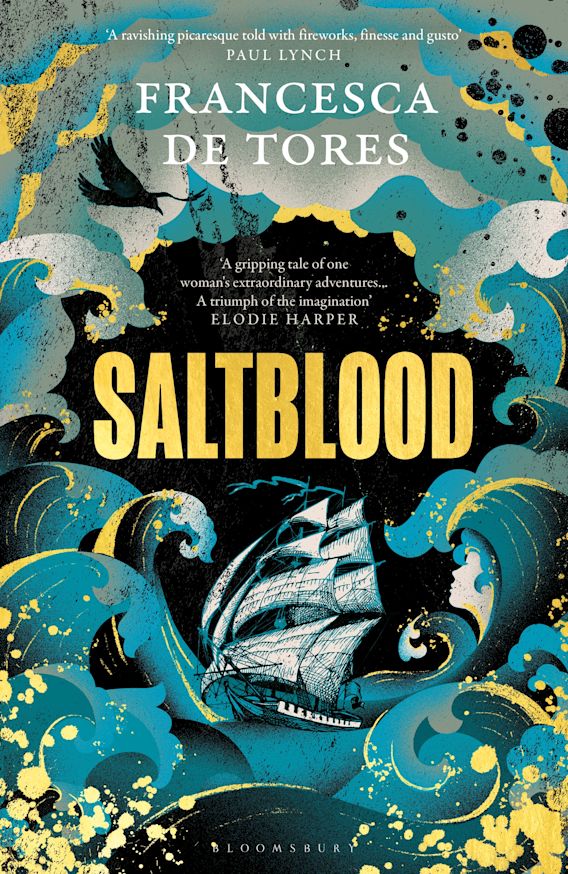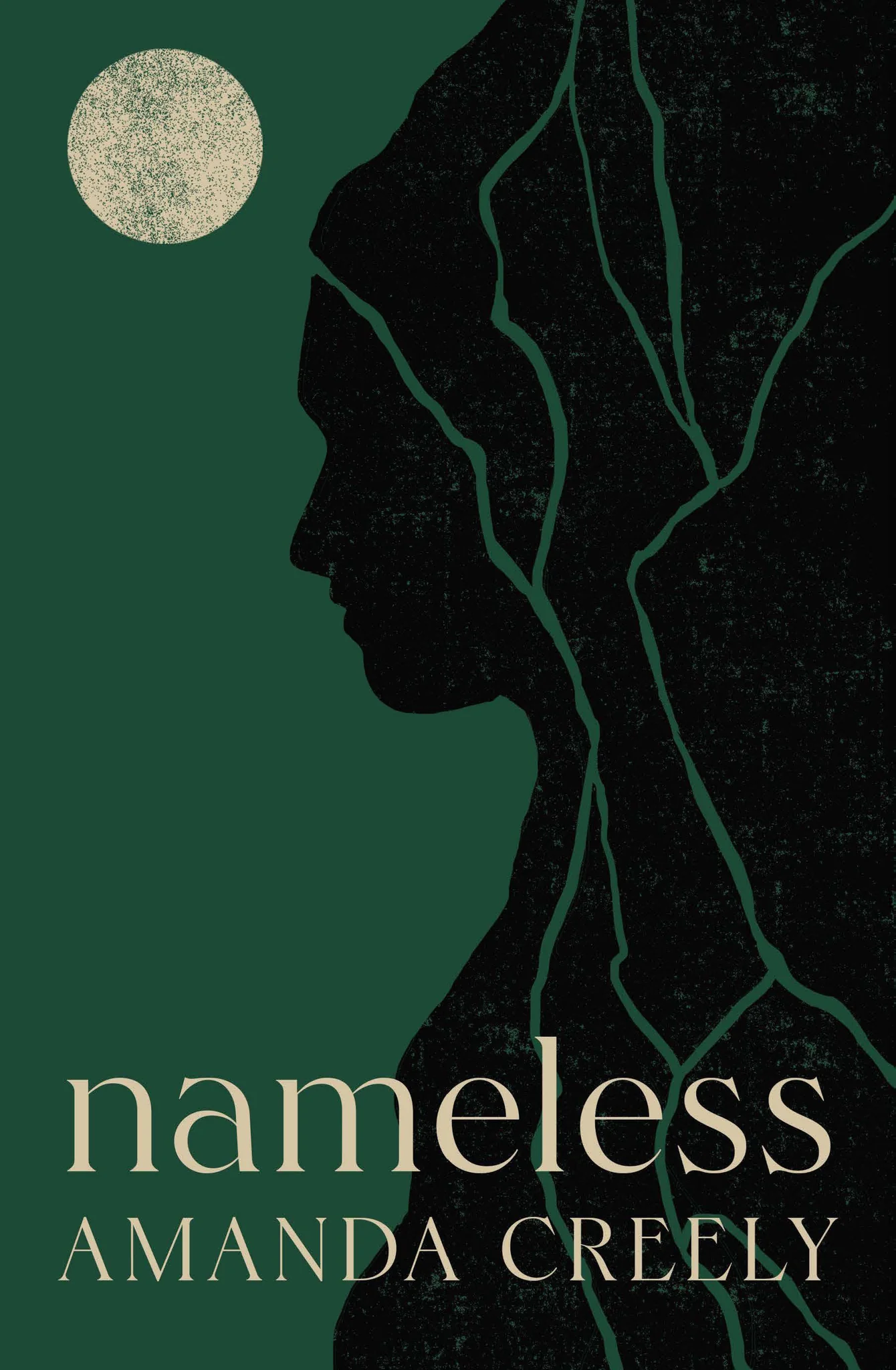Fiction
In scene-setting a discussion of Lia Hills’s The Desert Knows Her Name, it is difficult to avoid going straight to the matter of genre. What we have is postcolonial, outback-noir eco-fiction. This genre mash-up isn’t new and is arguably a defining fictional mode of post-settlement Australia’s third century. As a form, it provides a meeting place where authors, both Indigenous (Melissa Lucashenko, Julie Janson) and non-Indigenous (Alex Miller, Tim Winton, and Gail Jones), meet to worry through complexly entangled fears around colonialism’s dark legacy, personal trauma, social dysfunction, and environmental degradation. And it isn’t territory new to Hills, as readers familiar with her previous (second) novel, The Crying Place (2017), will be aware.
... (read more)Tell me your crow name. Tell me the name you will wear to the bottom of the sea,’ begins the narrating voice of Francesca de Tores’s new novel, Saltblood. These opening words, spoken by the central character at what we come to realise is the end of her life, highlight the novel’s key themes and imagery: the play of names and identities, sometimes given and sometimes taken, but always something to be worn or cast off; the call of the sea and its persistent presence of sparkle and depth throughout this chronicle of an unusual life; and the blue-black image of the crow itself, the speaker’s constant familiar, an intimate figure who lurks, ominous and comforting, in the sway of rigging. Unfolding her story in the shadow of imminent death, the reflective, determined voice of de Tores’s narrator is as deep and unpredictable as the ocean itself, thereby setting the stage for a story of introspection and observation, resilience and desire, swashbuckling action, and quotidian seaboard life.
... (read more)‘But I think there’s sometimes more emotion in a whisper. It doesn’t cause a fuss.’ So says Teller, the narrator of Bendigo writer Amanda Creely’s novel Nameless. Her story, Teller tells readers more than once, is not nice. She is right: set in an unnamed and unrecognisable country and in a world that seems not to have sophisticated technologies for war or peace, Nameless is the story of everyday citizens facing an invasion by a hostile, brutal, and powerful neighbouring army.
... (read more)Enniscorthy, a town in County Wexford, was Colm Tóibín’s birthplace in 1955. His father was a schoolteacher and local historian. Martin Tóibín died young, when Colm was twelve, an early loss explored in Tóibín’s novel Nora Webster (2014), in which the eponymous widow’s son Donal is likewise twelve and a stammerer. In 2009, Tóibín published Brooklyn, which moves between Enniscorthy and New York City. The very modesty of Tóibín’s middle-class settings and characters – their constrained lives, village absorptions, small defeats – could not obscure Tóibín’s subtle artistry or his forensic interest in psychology, especially that of his women, many of whom are so complex, so contradictory, as to make the male characters seem extraneous, unimaginative, stolid.
... (read more)Percival Everett is a professor of English at the University of Southern California, and the author of numerous works of fiction published over the past forty years. Throughout his oeuvre, he has explored the ways in which texts engage with other texts, and has vigorously critiqued the persistent stereotyping of African Americans in the cultural history of the United States. His best-known novel is probably Erasure (2001), a complex satire directed at the publishing and media industries. Cord Jefferson’s recent adaptation of that novel, American Fiction, which won the Academy Award for Best Adapted Screenplay for 2023, has drawn further attention to Everett’s whole career. However, James, Everett’s reimagining of Mark Twain’s Adventures of Huckleberry Finn (1884), from the perspective of the escaped slave Jim, may prove to be his most critically and commercially successful work thus far.
... (read more)Autofiction differs from autobiography in that, to use Jean Genet’s formula with which Édouard Louis opens his latest novel, Change: A novel, the self is nothing but a ‘pretext’. In Louis’ case, it is a pretext for exploring the self as a sociological, rather than psychological, phenomenon; the enduring product of the social class in which it was forged. Change (first published in 2021 as Changer: méthode) opens with the narrator, Édouard (né Eddy), sitting at his desk writing what will become the novel we are now reading. His objective: ‘to fix the past in writing and, I suppose, to get rid of it’. This will prove easier said than done. As Édouard later discovers, the past has a way of reinstating itself, like a pendulum which is always restored to equilibrium. It is, however, less this resting place than the oscillations that Louis is interested in recording.
... (read more)One of the joys of reading – and a point of difference from narratives told on the various screens we turn to for leisure – is imagining a story’s mise en scène. Our mental pictures (termed phantasia by a group of British neurologists) are a strange alchemy of images from our memories, thoughts, and dreams. Though visualisation is not a universal experience, many readers may comment that a book-to-film adaptation was ‘exactly as I pictured it’ or else ‘nothing like what I saw in my mind’s eye’.
... (read more)You need to look closely at the cover of Shankari Chandran’s novel Safe Haven to notice the sharp edges of the deceptively inviting image it depicts: the handcuffs, the barbed wire, the boat that seems to sit on top of the waves and yet be at the bottom of the sea, and the rebuke contained in the book’s title.
... (read more)A mid-career genre change is always cause for attention. Best known for her fearless investigations into institutional sexual abuse, it is hardly surprising that Louise Milligan should transfer her journalistic nous and commitment to social justice into the realm of crime fiction. Pheasants Nest is part of a movement in post-#MeToo crime fiction, which has flourished in Australia and abroad in the past decade. It challenges the norms of the genre to centre victims and amplify the reverberations of violence against women (recent examples include Jessica Knoll’s Bright Young Women and Jacqueline Bublitz’s Before You Knew My Name).
... (read more)One of Caledonian Road’s primary characters, Milo Mangasha, tends to speak in political slogans, which his childhood friend identifies as ‘college talk’. Readers may recognise in Milo the rhetoric of characters in Andrew O’Hagan’s previous novel, Mayflies (2020), a popular and critical success that was subsequently adapted for television. Like Mayflies, Caledonian Road is stridently certain about its political and moral positions. It reads like a passionate argument for purification. In this fictional world, set in contemporary Britain, a person who maintains ties with corrupt and wealthy conservatives, while voicing left-wing principles and ideals, risks a ‘crack-up’. Failing the test of moral consistency turns you into a cipher, a hollow man, a danger to yourself and others.
... (read more)










